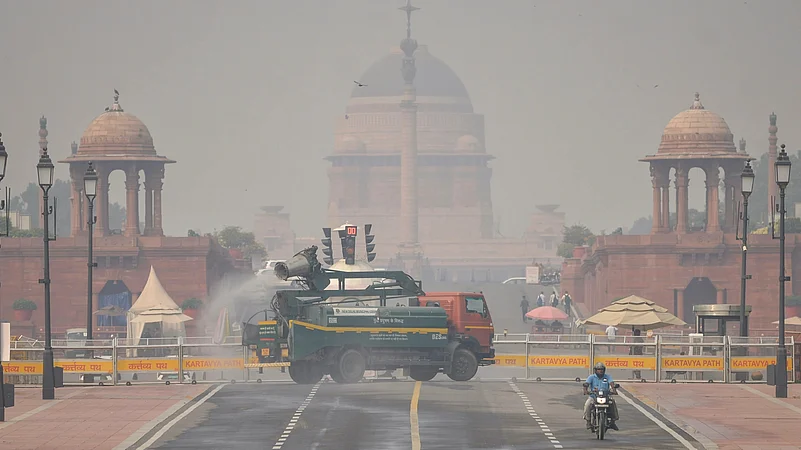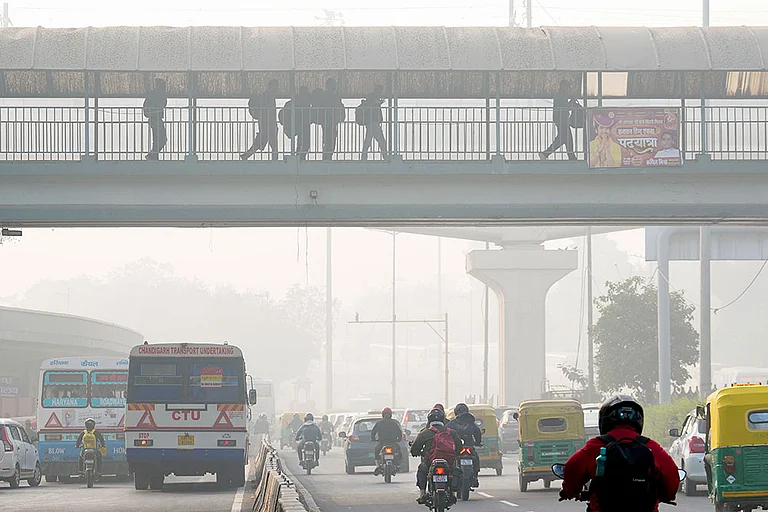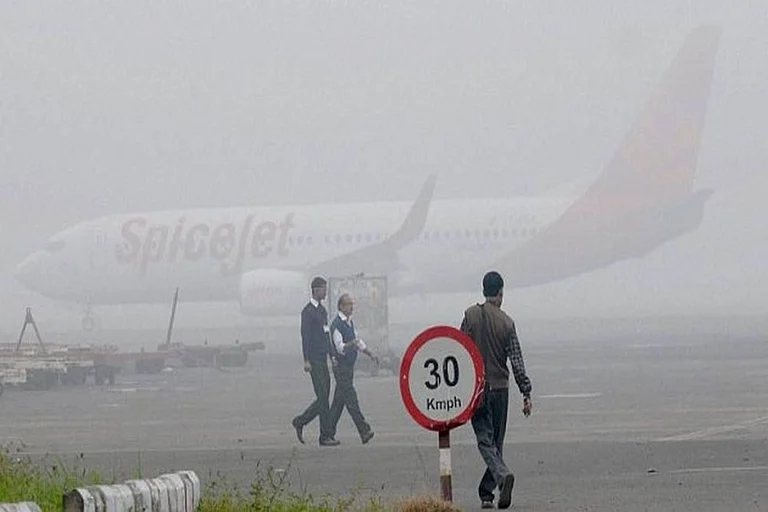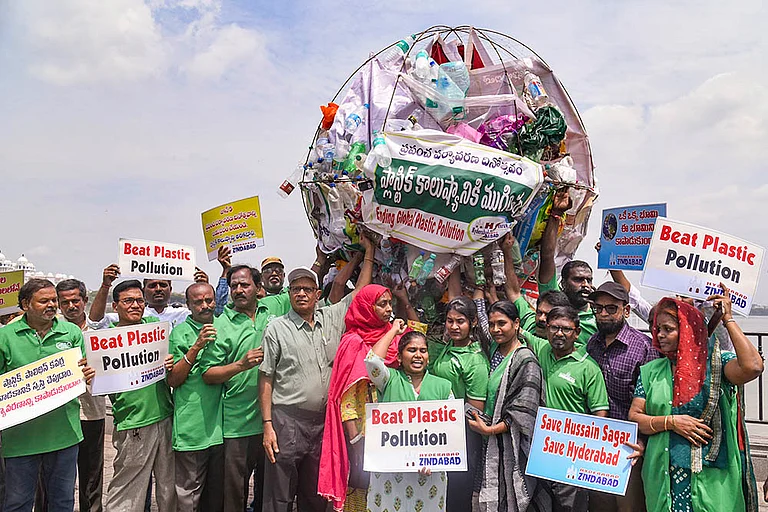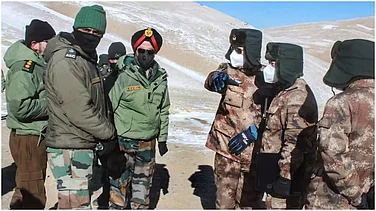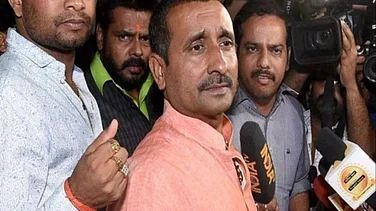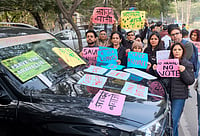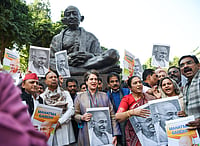
Delhi’s 24-hour average AQI on Diwali reached 345, the highest since 2021, with PM2.5 levels peaking at 675 µg/m³ at midnight.
This season, stubble burning’s contribution to Delhi’s pollution has been less, with experts suggesting that Delhi’s topography and prevailing upper-level winds concentrate pollutants in the city, making it the worst-affected area each year.
Temporary measures like cloud seeding, smoke towers, or water cannons offer only brief relief. Experts emphasise a two-pronged, science-driven approach: adopting an airshed strategy, tackling pollution at its source.
Delhi’s 24-hour average AQI on Diwali reached 345 at 4 pm, the highest since 2021. By October 21, it climbed to 351, surpassing last year’s post-Diwali reading of 339, while Swiss IQAir recorded a peak of 1,121. By the evening of October 22, the AQI stood at 353, rising further to 428 on October 23.
The surge of toxic smoke, heavy with pollutants and metals, pushed the city’s hourly PM2.5 concentration to 675 micrograms per cubic metre at midnight — the highest Diwali night level since 2021. Swiss IQAir also ranked Delhi as the world’s most polluted major city, with a US AQI of 404.
This year, the Supreme Court allowed the use of firecrackers under a strict regulatory framework, permitting only green crackers approved by the National Environmental Engineering Research Institute (NEERI).
Their sale was allowed between October 18 and 20, with usage restricted to the day before Diwali and Diwali itself, and limited to specific hours.
Experts, however, see the decision as a step back from the previous zero-tolerance approach. Environmentalist Vimlendu Jha noted that the issue shifted from public health to faith, sentiment, and politics.
The court observed that Solicitor-General Tushar Mehta, representing the Union government and NCR states, made a “fervent plea” to lift the ban on firecrackers during Diwali and other major festivals, including Christmas and New Year’s Eve.
Calling the decision “regressive”, Jha noted that the scientific data suggests that despite being less harmful, green crackers still contribute to pollution. “Data from previous years shows that the absolute ban on firecrackers was flouted, so imagine how much of partial ban will be observed.”
As this coincides with the onset of winter, the colder temperatures and low wind speeds trap pollutants close to the ground.
The combination of these factors produces the same outcome each year, with the AQI plummeting and the hazardous smog engulfing the capital. According to a report released by the Energy Policy Institute at the University of Chicago, residents of Delhi could lose up to 8.2 years of their lives due to the health impacts of this persistent pollution.
However, this season, the contribution of stubble burning in neighbouring Punjab and Haryana has been minimal so far— remaining below 1 per cent on most days and peaking at just 2.6 per cent so far, according to data from the Centre’s Decision Support System (DSS).
The DSS recorded the peak share of 2.6 per cent on October 17, indicating that Delhi’s current surge in pollution is largely driven by local and cross-boundary emissions, primarily from industries and vehicles.
Gufran Beig, an Indian meteorologist and scientist at the Indian Institute of Tropical Meteorology, Pune, said that flooding in Punjab has delayed the harvest season, so Delhi has not yet felt the impact of stubble burning. “Delhi will start experiencing effects by the first week of November, with a peak around mid-November,” Beig noted.
He explained that farmers are under significant pressure. “Normally, they have about 45 days to burn stubble and prepare fields for the rabi crop. This period has now shrunk to around 35 days due to the delayed harvest, creating a major challenge.”
Beig added that what used to be spread over 45 days is now condensed into 35, resulting in a much higher daily intensity of stubble burning and disposal.
Why Delhi?
“The thing about stubble burning is that it’s not a small, localised fire — it’s a massive blaze with intense heat that sends plumes high into the atmosphere,” said Beig. The transport of these emissions happens at around 850 to 900 millibar pressure, roughly one to two kilometres above the ground.
The wind direction and speed is crucial. “In November, those upper-level winds are predominantly north-northwesterly, which means the emissions are directly carried into Delhi’s atmosphere.”
There are two main reasons why the impact is concentrated in Delhi rather than in Uttar Pradesh or beyond. First, Delhi’s topography acts like a basin, trapping pollutants much like water in a pond, explained Beig. Second, the particulate matter has a short lifespan of two to three days, after which it settles.
“So, even if some particles travel farther, most dissipate before reaching distant areas. That’s why Delhi experiences the worst of the pollution every year,” he added.
What is the solution to Delhi’s pollution?
Beig said solving the persistent pollution problem requires a two-pronged approach: mitigation planning and a scientific strategy. “First, we need to adopt an air-shed approach rather than focusing only on cities,” he explained.
Second, instead of relying on temporary measures like smoke towers, cloud seeding, or water cannons, which provide relief for only a day or two, the focus must be on tackling pollution at its source, including emissions from fossil fuels, biofuels, industries, thermal power plants, and dust.
Fossil fuel emissions, mainly from transport and diesel generators, are the largest contributor, accounting for 40 percent of the most harmful PM2.5 pollutants, with the sector growing at roughly 40 percent per decade, Beig noted. Even with electric vehicles, the infrastructure to support them is insufficient.
“Shifting from petrol to diesel, back to petrol, and now to CNG may solve one problem but create another,” Beig said. “CNG, for example, may lower PM2.5 and PM10, but it releases significant benzene and nitrogen oxides, which contribute to ozone formation. It’s not a permanent solution.”
Cloud seeding is also not a solution, said Jha. “It is an unverified, end-of-pipe solution, allowing pollution to take place and then showering rain on it is a stupid and a very very expensive affair,” he said. He estimated that covering just one square kilometre costs around ₹50 lakh. According to government data, Delhi covers an area of 1483 square kilometers.
As the pollution worsens, Delhi Environment Minister Manjinder Singh Sirsa on Wednesday alleged that the Aam Aadmi Party is trying to blame "Diwali, Hindus, and Sanatanis" for the capital’s air pollution.
He quoted comparative data, saying that the AQI “stood at 345 on the night before Diwali, which is lower than in previous years. In 2020, it was recorded at 414, in 2021 at 382, and this year, during our time, it was 345. After the bursting of firecrackers on Diwali, the AQI rose slightly to 356, an increase of just 11 points.”
However, beyond data and political back and forth, the experts suggested that Delhi needs to talk to its neighbours, as air pollution does not see the political or administrative boundaries.
“Things should be easier now as the neighbouring states are now BJP ruled, for the air to reach Delhi, it needs to cross Haryana,” said Jha.







